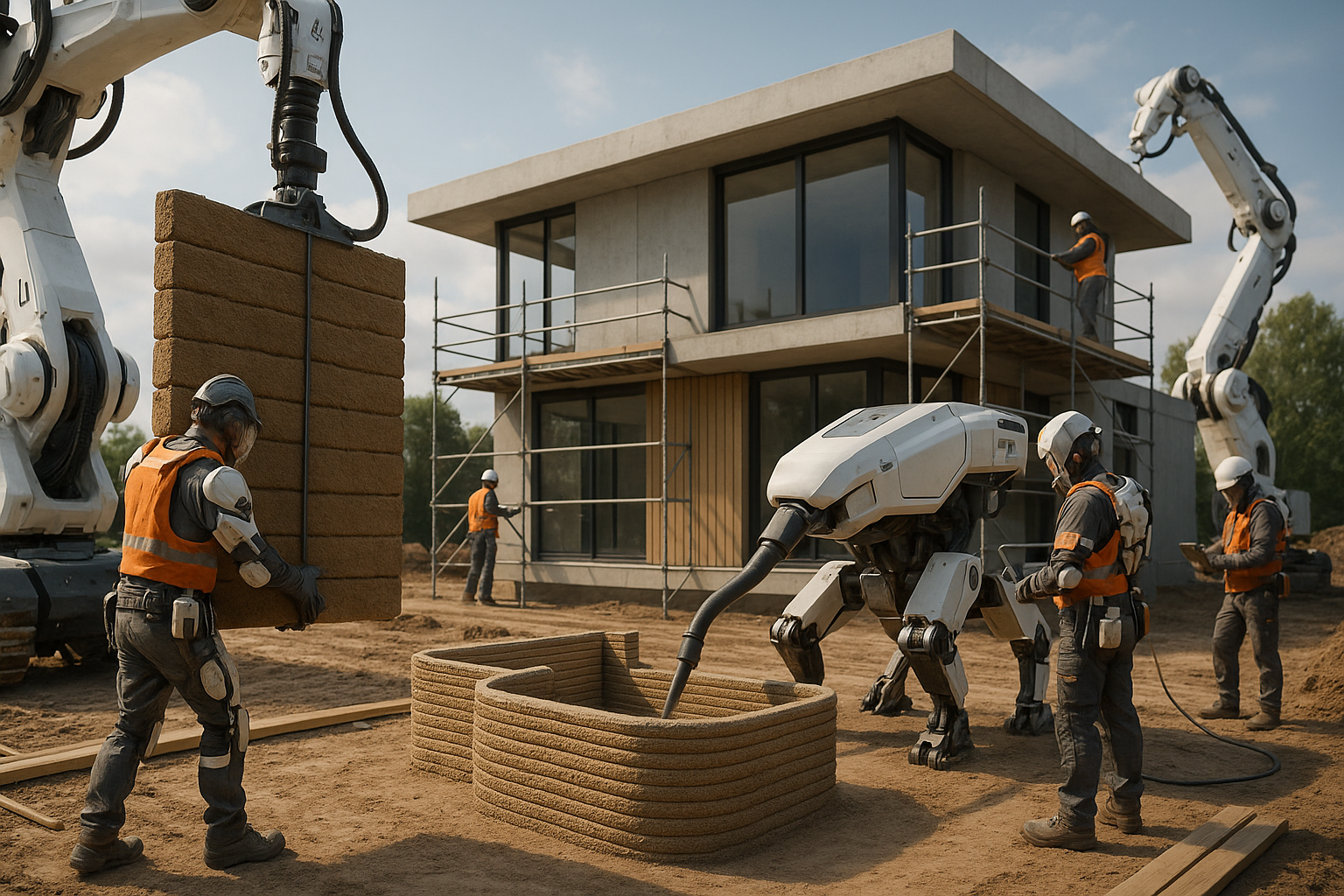Transform Your Dream Home with Revolutionary Building Solutions
Transforming your dream home into reality has never been easier thanks to revolutionary building solutions that offer cutting-edge design, sustainability, and efficiency—browse options today to discover how these innovations can elevate your living space.

Innovative Materials for Modern Homes
The construction industry is undergoing a significant transformation with the introduction of advanced materials that promise durability, energy efficiency, and aesthetic appeal. One such material is cross-laminated timber (CLT), which is gaining popularity for its strength and eco-friendly properties. CLT panels are prefabricated, reducing construction time and waste, and they provide excellent thermal insulation, which can significantly lower energy costs1.
Another game-changer is the use of recycled materials. Companies are now producing building materials from recycled plastics and metals, contributing to a more sustainable environment while also offering unique design possibilities for homeowners2.
Smart Home Technology Integration
Incorporating smart technology into your home is no longer a luxury but a necessity for modern living. Smart thermostats, lighting systems, and security solutions not only enhance convenience but also contribute to energy savings and increased property value. For instance, installing a smart thermostat can save up to 10% on heating and cooling costs annually3.
Moreover, home automation systems allow you to control various aspects of your home environment remotely, offering peace of mind and increased security. As technology advances, the integration of artificial intelligence in home systems is expected to further streamline household management4.
Cost-Effective and Sustainable Design Solutions
Building a dream home often comes with concerns about budget and sustainability. Fortunately, modern design solutions are addressing these issues head-on. Prefabricated homes, for example, can be more cost-effective than traditional construction methods. These homes are built in sections in a factory setting and then assembled on-site, reducing labor costs and construction time5.
Additionally, sustainable design practices such as passive solar design and green roofs can further enhance a home's energy efficiency. Passive solar design takes advantage of natural sunlight for heating, reducing reliance on artificial energy sources, while green roofs provide natural insulation and improve air quality6.
Exploring Financial Incentives and Opportunities
As you embark on the journey to transform your home, it's crucial to explore financial incentives and opportunities that can offset costs. Many governments and organizations offer rebates and tax credits for incorporating energy-efficient systems and materials. For example, the U.S. federal government provides tax credits for solar energy systems, which can cover up to 26% of the installation costs7.
Furthermore, some local utilities offer incentives for energy-efficient upgrades, making it financially viable to invest in smart home technologies and sustainable materials. By exploring these options, you can not only enhance your home's functionality and value but also contribute to a greener future.
Transforming your dream home with revolutionary building solutions is not just about aesthetics—it's about creating a space that is efficient, sustainable, and tailored to your lifestyle needs. As you explore these innovative options, remember to visit websites and search options that align with your vision to ensure your home is as unique and forward-thinking as you are.
References
- WoodWorks: Benefits of Mass Timber
- ArchDaily: 7 Innovative Materials That Could Change the Architecture Industry
- U.S. Department of Energy: Thermostats
- Forbes: The Future Of Smart Homes
- NAHB: Offsite Construction
- U.S. Department of Energy: Passive Solar Home Design
- U.S. Department of Energy: Residential Renewable Energy Tax Credit